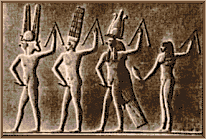WARNING!! The information and photographs contained in this guide are quite explicit and may be disturbing to some viewers. By entering our site, you agree that you are either an adult, or have your parent or guardian’s permission to view explicit information and images on the internet. Please review our user agreement and medical disclaimer before going any further. IN NO WAY SHOULD AFRAIDTOASK.COM’S SITE OR ONLINE GUIDES BE CONSIDERED AS OFFERING MEDICAL ADVICE! As depicted in Salvador Dali’s “The Great Masturbator”, masturbation is a fascinating and complex topic that affects each of us differently. Despite almost universal agreement by medical doctors that masturbation is a normal, safe, and common practice, masturbation continues to be associated with embarrassment, shame, and guilt, primarily due to societal perceptions of the act. Yet masturbation is a common and natural function that is practiced by individuals of all sexual orientations, genders, and ages. Masturbation is defined as sexual self-pleasuring that involves self-stimulation. According to recent studies, 97% of men and 83% of women have masturbated at some point in their lives. That is an increase from the 1950s Kinsey Report, which reported that 92% of men and 58% of women have masturbated.Although masturbation is statistically quite prevalent, it is still viewed by society as a taboo subject. Even in the new millennium, masturbation continues to be one of the least talked about, least studied, and least understood of all sexual behaviors. For this reason, we at AfraidToAsk.com, find it important to present the straightforward facts and fictions about masturbation.
THE HISTORY

While there are no direct references to masturbation in cave paintings or other prehistoric artifacts, the practice of masturbation by Bonobo chimpanzees, which share 98.4% percent of our DNA, provides some confirmation that masturbation has likely been practiced since the dawn of mankind. The Ancient World In the ancient world, depictions of male masturbation are relatively common. The

Egyptians, for example,celebrated masturbation as the process by which the sun god, Atum, created the first Adam and Eve equivalents, Shu and Tefnut. “With the hand of God, Atun masturbated and brought forth the first pair of souls.” The Sumerians, who invented the first written Western language, make reference to the Mesopotamian god Enki masturbating, his ejaculation filling the Tigris River with flowing water. Condemnation of masturbation is as old as fertility-worship and is probably based on early man’s realization that there is safety in numbers. A bigger tribe is more likely to gain new territory and expand its power base. In theory, this is this reason that any form of sexual pleasure unlikely to result in a population increase (e.g. masturbation, homosexuality, oral/anal sex) has routinely been denounced as wrong. While in today’s overpopulated world this rationale no longer makes logical sense, this belief structure continues to drive the moral attitudes of many people.In the Judeo-Christian tradition prevalent throughout Western society, the main Scripture quoted by Christians to denounce masturbation is Genesis 38. In biblical times, under Jewish law, a brother was required to procreate with his brother’s widow. Onan of Judah refused, and “spilled his seed” (i.e. ejaculate), on the ground instead. This is the origin of the term Onanism (The Sin of Onan) which is incorrectly used in place of masturbation “” in fact, what really happened was premature withdrawal (i.e. coitus interruptus). 18th & 19th Centuries.

It was primarily during the 1700s and 1800s when masturbation was first associated with mental and physical deficiencies. Some prominent physicians, scientists, philosophers, and religious leaders believed that illnesses such as insanity, vision and hearing problems, epilepsy, mental retardation, and general health problems were caused by self-stimulation. In fact, over 60% of medical and mental illnesses were blamed on masturbation.[1] The fear of masturbation was so great that throughout the world, extreme preventative measures were instituted including the use of mechanical restraints, genital surgery, and physical discipline.[2] By the 19th century the cereal magnate John Harvey Kellogg declared “sex for anything but reproduction” to be “sexual excess.” Kellogg and others began advocating routine circumcision of males as a deterrent to masturbation. The term, spermatorrhea, was even invented to explain nocturnal emissions, as no man was willing to admit to masturbating. Between 1856 and 1932, the U.S. Patent Office, awarded 33 patents to inventors of anti-masturbation devices. Here are some examples antimasturbation devices: 1. Simple Bondage”“ For some, the simple answer was to tie the masturbators up and prevent them from touching themselves. 2. Leather-Jacket Corset”“ A corset made out of leather and steel to be used by boys, was created by Dr. Fleck in 1831. It included a metal penis tube and “a steel band riveted to the shield permanently and attached to the body with an encircling steel band in such a manner that it cannot be removed and prevented access to the testicles.” The doctor once reported that “it closes with greatest accuracy, fits to perfection, and the boy wears it continuously without having succeeded even once in reaching his genitals or pulling the machine away from his body so as to produce friction on his genitals.” 3. Spike-lined Ring”“ Created to prevent the nocturnal emissions and any display of nighttime sexuality, spike-lined penis rings were created in the 1950’s by doctors in Boston. 4. Spermatorrhea Bandage”“ These devices kept the penis tightly bound, thus making it impossible to have an erection. 5. Stephenson Spermatic Truss”“ Patented in 1876, this device placed the penis in a pouch, and then stretched and tied down between the legs, which made erection impossible. Stephenson changed his device slightly 21 years later, adding a metal hood under which the penis could move freely. Any erection would drive the penis against painful spikes. 6. Bowen Device”“ This device was like a cup that was placed over the head of the penis and attached to pubic hair by chains and clips. When the wearer got an erection, the pubic hair would be plucked painfully and the wearer would have to respond.

7. The Cage”“ The Handbook of Medicine in 1885 offered a metal cage that could be put around a boys genitals. It would allow erections, which weren’t seen as wrong, yet would prevent the boy from touching himself. 8. Dr. Moodie Apparatus for Boys”“ Scotch physician John Moodie invented this truss-and-shield device in 1848. It included a penis tube with a slot on the side for the boy to push his penis out in order to urinate. 9. Penis-Cooling Devices”“ These devices cooled an impending erection with either air or water; Frank Orth invented both types and patented them in 1893. He said that “the penis is inserted in the hole and between the levers so that if during the night an erection occurs, the dilatation of the penis spreads the levers, thus separating the jaws, and permitting the cold water to flow through the tube to the sack or envelope. The cold water”¦ cools the organ of generation, so that the erection subsides and no discharge occurs.” 10. Sexual Armor”“ A jacket with leather pants which supports a large piece of steel armor. Perforations in the armor allowed urine to escape, yet the bolted, padlocked trapdoor at the rear would have to be opened for other business”¦ Information from Sex Lovers Book of Lists by Ron Louis and David Copeland http://datingfun.com/sex/masturbation/antidevices.asp
20th Century In the 20th Century, individuals within the medical community began questioning whether or not masturbation was independent from the various psychiatric and medical illnesses to which it was historically linked.

During the 1950s and 1960s, with greater discussion of sex and sexuality and lessening conservative social attitudes along with greater medical research on the topic of masturbation,? the thought that the act of self-stimulation is associated with medical and mental illnesses dissipated. Beginning with the Kinsey Report of 1948, masturbation was demystified and even discovered to be beneficial. In 1966, Masters & Johnson (see photo) revealed the practice to be virtually universal in North America, cutting across all boundaries of sex, age, race, and social class. In 1971 Goldstein, Haeberle & McBride determined masturbation to be the most common form of sexual activity among humans.
Today It is clear that masturbation has had a dynamic and varied history.? It now almost universally accepted by the medical community that masturbation is a common, safe, and normal practice which occurs in infants, teenagers, and adults.

Despite this new attitude, the actual practice and discussion of masturbation continues to be a social taboo within most societies.? Former Surgeon General Jocelyn Elder was immediately dismissed by President Clinton in 1994 after she stated that masturbation “is something that is part of human sexuality and its part of something that perhaps should be taught.”[3]
THE RELIGIOUS VIEWPOINT

Over the ages, most religious groups have condemned masturbation, claiming that it inhibits self-control and promotes sexual promiscuity. Even today, traditional Catholic and orthodox Jewish doctrine says that masturbation constitutes a grave moral disorder.
Other groups ““ such as mainstream Protestant sects and Reform Judaism ““ have a more tolerant attitude or the topic is avoided. Some liberal religious institutions have even promoted masturbation as a safe alternative to pre-marital sex.
The Catholic Church has been one of the most outspoken groups condemning masturbation. Catholic teaching is that sexual activity is intended for conception, thus masturbation is an immoral sexual practice because it does not permit conception. In addition, the Catholic Church teaches that masturbation breeds lust and selfishness, which takes one further from God. To illustrate, on Dec 29th 1975 Pope Paul wrote this in his Persona Humana – Declaration on Certain Questions Concerning Sexual Ethics:
“”¦masturbation is an intrinsically and seriously disordered act”¦the deliberate use of the sexual faculty outside normal conjugal relations essentially contradicts the finality of the faculty. For it lacks the sexual relationship called for by the moral order, namely the relationship which realizes “˜the full sense of mutual self-giving and human procreation in the context of true love.’ All deliberate exercise of sexuality must be reserved to this regular relationship.”[1]
Other groups that continue to publicly denounce masturbation based on the Onan tradition include Mormons, Orthodox Jews, and Muslims. Traditional African religions are more open-minded about masturbation. Asian religions also appear to be a more tolerant, especially of female masturbation. Male masturbation is thought by Asian religions to be harmful because of the loss of semen, long considered a vital substance that is spiritually advantageous if kept inside the body.
[1] Pope Paul VI, “Persona Humana – Declaration on Certain Questions Concerning Sexual Ethics,” issued by the Sacred Congregation for the Doctrine of the Faith, on 1975-DEC-29. See: http://www.odyssee.net/~prince/cdfsex.html
THE MEDICAL VIEWPOINT

Despite what many of us may have been told by our parents, teachers, or religious leaders, masturbation does not cause physical injury or harm to the body. We’ve all heard the many myths about masturbation. Here are some of the leading myths: ” Masturbation leads to blindness
” Masturbation causes you to grow hair on the palms of your hands
” Masturbation causes you to become impotent later in life
” Masturbation leads to mental illness
” Masturbation permanently reduces libido, desire, and/or sexual performance
” Masturbation permanently reduces the quantity or quality of semen
We are happy to report that all of these myths and misconceptions have been proven to be false by the medical community. Masters and Johnson who are a team of physicians who pioneered the field of human sexuality, and other researchers have demonstrate no negative short-term or long-term medical health effects from masturbation.
Despite the fact that there are no physical health consequences that may result from the practice of masturbation, there are emotional aspects that should be taken into consideration.
For example, if masturbation occurs within a marriage or relationship between two individuals where self-pleasure takes the place of having sex with a partner, this act could potentially damage the self-esteem of the latter. However, according to Louanne Cole Weston, PhD, a board-certified sex therapist “One lesson of long-term relationships is that both people need not be interested in doing the exact same things at the exact same time ““ and that includes sex.”
[1] If the partners within a relationship are capable of communicating their needs, desires, and expectations with one another, masturbation can then be part of a healthy component of a relationship.
Furthermore, masturbation may have negative social consequences if one becomes preoccupied with self-pleasure to the point that it interferes with one’s job and one’s social relationships. This includes spending excessive time masturbating while failing at attempts to reduce or control these activities resulting in interference with one’s day-to-day life activities.
According to the Mayo Clinic.com, 3-6% of Americans suffer from sexual obsession, a disorder found more commonly in men.
[2] Sexual obsession or sexual addiction may result in socially and financially detrimental consequences including using sexually explicit phone lines, visiting x-rated web sites and sex-related chat rooms, or exposing oneself in public. Most individuals who suffer from such illnesses may seek treatment with a counselor, clinical psychologist or psychiatrist for counseling, therapy, and medication.
Most of concerns associated with the act of masturbation stems from the inherent negative connotations and discomfort associated with discussions of sexuality and sexual expression. Thus, a variety of views have emerged over the centuries regarding masturbation and its consequences both physiologically and psychologically ““ even if they are not scientifically based.
Masturbation is a considered a natural and safe (both physically and emotionally) way for men and women to express sexuality and may help promote self-awareness, self-acceptance, and self-confidence. By exploring one’s own body visually and by touch, this knowledge can be carried over to provide for a stronger and satisfying sexual relationship with one’s partner by opening lines of communication regarding what their body responds to best.
Positives
” May help to reduce stress and release sexual tension
” May help a person become more comfortable with his or her own sexuality
” Masturbation eliminates the potential for pregnancy or transmission of sexually transmitted diseases.
” Being self-aware of one’s body and sexuality may better prepare him/her for sexual activity with a partner.
Negatives
” Frequent and vigorous masturbation may produce skin abrasions or superficial bruising/temporary discoloration.
” Masturbation may become an obsession or addiction.
Masturbation may become an obsession or addiction which is generally felt to be the case if it reduces time available to participate in other activities (i.e. social relationships, job, work). This may lead to diversion of income toward sex merchandises (i.e. videotapes, chat rooms, online pornography, phone chat lines).
FACT OR FICTION

1. Most women don’t masturbate.
True
False
2. Women usually insert fingers, cucumbers, or dildos into the vagina to masturbate.
True
False
3. Masturbating too much can cause blindness and hairy palms.
True
False
4. Women who masturbate prefer to use vibrators more than any other kind of stimulation.
True
False
5. Women prefer direct stimulation of the clitoris to reach climax.?
True
False
6. A masturbating woman takes longer to reach an orgasm than a man.
True
False
7. Most sexually explicit (X-Rated) movies contain violence or aggression.
True
False
8. Men masturbate all the time.
True
False
9. Masturbation is completely safe and never is harmful.
True
False
Score =
WHY WE MASTURBATE
Masturbation can be an important way for us to discover our bodies and to become comfortable with our own sexuality. Sexual therapists teach us that masturbation can help us achieve a higher level of sexual satisfaction.Masturbation allows us to explore our sexual essence without worrying about sexual inadequacy, fitting into social norms, and satisfying partner expectations. By teaching ourselves the logistics of what turns us on, and how we orgasm, we become experts of our own bodies, or as Jerry Seinfield put it, “Master’s of our Domain”. This makes us more confident and liberated for later experiences involving sexual partners. In theory, those who masturbate and develop these arousal skills have an easier time reaching orgasm than those that don’t.
Masturbation provides us with an easy release of sexual tension that does not put us at risk of sexually transmitted diseases or pregnancy. Masturbation has also been reported to enhance self-image, ease depression and anxiety, alleviate premenstrual cramps, and lessen migraine headaches.
The Kinsey Study reported that two out of three women and seven out of ten men reported that they masturbated “to relieve sexual tension.” In addition, a third of men and women responded by saying they masturbated because they had no current sexual partner. And one-third of men and one-quarter of women said they masturbated to relax and unwind.
WHEN WE MASTURBATE
Self-exploration and masturbation is common among children and in fact begins in the womb.
For example, there have been reports by physicians of the ability to visualize by ultrasound male infants in the uterus touching themselves.[1]
According to Dr. Daphne Miller of WebMD: “By the age of five, most children deliberately play with their genitals to experience pleasure.” Little boys may rhythmically rub or pull their penises and little girls may rub themselves, squeeze their legs together, and sometimes even insert objects into their vaginas.”[2] During this age, it’s important that parents do not make children feel self-conscious or ashamed about their sexual exploration. However, it is equally important for parents to emphasize that there is a time and place for everything.

During adolescence, masturbation with the goal of orgasm, usually begins.
The Kinsey Institute, an organization affiliated with Indiana University, was founded in 1947 for the purpose of establishing research in areas of human sexuality, gender, and reproduction. Dr. Kinsey and colleagues published Sexual Behavior in the Human Male in 1948 in which they interview approximately 5,300 males attempting to gather objective facts regarding male sexual behaviors and later released Sexual Behavior in the Human Female in 1953 in which over 6,000 women were interviewed.
Some results of this landmark study included:
” 92% of males reported that they had masturbated
” 62% of females reported that they had masturbated
” 45% of females who reported having masturbated indicated that they could reach orgasm within 3 minutes.
Masturbation techniques reported by females:
” 84% used clitoral and labial manipulation
” 20% used vaginal insertion
” 11% used breast stimulation
” 10% used thigh pressure
” 5% muscular tension
” 2% had fantasy alone to reach orgasm; and
” 11% used other techniques
WHERE WE MASTURBATE
While the majority of people masturbate in the privacy of their own bedroom, masturbation can literally take place in any location. Ones home is the most common and private location (e.g., while lying on the bed, in the bath or shower, or on the toilet, are the three most reported home locations).
Some people report getting sexual excitement from masturbating in locations where there is a risk of getting “caught”. Masturbating at school or work, masturbating in ones car, or masturbating on a bus, train, or airplane lavatory are all frequented locations.
Adult entertainment centers are another location where masturbation occurs outside of the home (usually for men). Many of these locations contain fee-based viewing booths that show pornographic videos. Sometimes these viewing booths contain glass dividers that allow adjacent masturbators to watch each-other while masturbating. Masturbation in a location that may allow others to witness the activity is considered exhibitionism, and is a whole different topic. Furthermore masturbation outside the privacy of ones home (i.e., in public) is usually considered indecent exposure, and is illegal in most communities. A common discussion on our bulletin board is regarding “the wierdest place you’ve masturbated.”
HOW WE MASTURBATE
Techniques for masturbation, like most aspects of sexuality, vary greatly from person to person. Each of us has a unique set of images, thoughts, odors, objects, and positions that arouse us. There is no right and wrong way to masturbate, and no one should feel ashamed or strange because they masturbate in a different way than their peers. Men tend to masturbate by stimulating their penises with their hand. Most men move their hand in an up and down motion on the shaft and glans of the penis, with variations on the tightness of the grip and the speed of the motion.

The speed generally increases as orgasm approaches and slows/stops during orgasm. Males may also stimulate their penises by rubbing against objects, or by thrusting their penis into various objects (e.g., wide-mouthed bottle, plastic sandwich bag, or even plastic vaginas ““ with or without fake public hair. A few males are able to perform auto-fellatio on themselves (this is a popular topic on our masturbation bulletin board). Women tend to masturbate by stroking, rubbing, or applying pressure to clitoris, mons, or labia. Typically, females apply generalized pressure to the genital area while lying, sitting, or standing. While many use fingers for stimulation, others rub against pillows, towels, or other objects.

Some women exert pressure on the clitoris by crossing their legs and squeezing their thighs together or they run flowing water over the genital area while in the bathtub or shower. Some women may use objects that can be inserted or rubbed on their genitals (e.g., vibrator, dildo). Females often achieve orgasm within two to five minutes of masturbation. Many individuals, males and females alike, use lubricants to enhance their masturbating experience. These lubricants include saliva, soap, lotions, oils, K-Y jelly, water, and cowper’s gland fluid (“pre-cum”). Water-based lubricants such as saliva and KY jelly are the least irritating and chaffing to sensitive genital skin.
MUTUAL MASTURBATION
Mutual masturbation is the act of two or more people stimulating each other’s genitals. (Mutual masturbation by men is sometimes referred to as a “circle jerk.”)
Mutual masturbation can also involve a partner(s) watching as another person stimulates him or herself. This form of sexual activity ““ which is common in both intimate heterosexual and homosexual relationships ““ may continue until orgasm for one or both partners is reached, or as foreplay for intercourse.
Mutual masturbation can be an important activity for individuals who wish to abstain from intercourse, or who have a hard time reaching orgasm through intercourse. Women, in particular, often report that they enjoy mutual masturbation prior to or following intercourse in order to achieve orgasm.
With the advent of the internet, a new form of mutual masturbation has developed. Using computer cameras and conferencing software, people have started to masturbate while watching eachother do the same.
PORNOGRAPHY
Pornography is often used hand-in-hand with masturbation to stimulate the imagination as well as the genitals. In fact, the word pornography is derived from two Greek words that translate literally as “writing (about) prostitutes.”
 |
 |
 |
 |
 |
In today’s diverse society, there is no commonly accepted definition of pornography; some people believe the Sports Illustrated swimsuit edition and R-Rated movies are pornographic while other people don’t consider something pornographic unless it involves sexually violent or aggressive acts. Most of us fall somewhere in-between.

Regardless of your personal definition of pornography, these sexually explicit materials are part of a multi-million dollar industry.
Sexually explicit media ranges from books to magazines to 900 phone numbers to videos/DVDs and online media. The majority of pornographic books, magazines, and videos are marketed to heterosexual men. However, in the last 20 years more and more material has been produced for other groups such as heterosexual women, gay men, lesbians, and other diverse audiences. In fact, there are movies and scenes related to nearly every imaginable fantasy.
Traditional pornography includes magazines such as Playboy and Hustler. In the last 20 years, the X-rated video and DVD industry has grown tremendously – mostly due to the availablity of online pornography. Many men find watching a sexually explicit movie in privacy the perfect way to get an erection and achieve orgasm through masturbation. Online pornography is easily accessible and with the advances of broadband Internet allowing easy downloading of movies, the pornography industry has exploded.
Although some women enjoy visual pornography, the majority of women appear to be stimulated more by “romanticized” sexually explicit materials, such as Anne Rampling’s Erotica Series, or the latest article from Cosmo on the top ten ways to satisfy a man in bed.
In a 1994 study, college students were asked why they used erotica
[1]
. The four general responses were:
- Sexual enhancement – related to information and foreplay.
- Diversion – related to escape, relaxation, and entertainment.
- Sexual release – related to fantasizing.
- Substitution or using pornography as a substitute for sex (i.e. masturbation).

WARNING!!! EXPLICIT LINKS BELOW ONLY FOR ADULTS
In terms of masturbation, one can access nearly every imaginable type of sexual information. For example, we have found a website specializing in obtaining nearly every type of sexual content and fetish/fantasy. Other common sites include (in no particular order):
- heterosexual (e.g., amateur, overweight, fetish, classics)
- homosexual (male, female)
- transexual
- how-to (instructional) guides
- group orgies
- sex while smoking
- watersports (urinating during sex)
One can even subscribe to sites to watch on a mobile phone (for those who like to masturbate while driving – and, we assume, don’t mind the occassional automobile accident!)
There is a pornographic genre for every taste and fantasy (and then some).
[1] Perse, E. (1994). Uses of erotica and acceptance of rape myths. Communication Research, 21 (4) : 488-515)
RESOURCES

Masturbation is a common and natural function that is practiced by individuals of all sexual orientations, genders, and ages.
Despite almost universal agreement by medical doctors and health care professionals that masturbation is a normal, safe, and common practice, masturbation continues to be associated with embarrassment, shame, and guilt, primarily due to societal perceptions of the act.
We hope this guide has helped clarify some common misconceptions while demonstrating the positives and negatives of this common biological process.
Below is a listing of some of our favorite (and least favorite) websites that further address this important topic.
Interesting Web Sites & further Readings
1. Perhaps the best site on the Internet devoted to male masturbation is Jackinworld.com.
2. Bianca’s Alternative Online Community has an interesting section on masturbation.
3. DatingFun.com has a lot of additional detailed information on masturbation.
4. Here is a site that talks about male and female masturbation techniques.
5. A somewhat liberal look at religion’s take on masturbation is at http://www.religioustolerance.org/masturba.htm
Below is a list of some of our recommended readings on this topic from Amazon.com
Masturbation and Adult Sexuality by Suzanne Sarnoff, Irving Sarnoff
Masturbation: The History of a Great Terror by Jean Stengers, Anne Van Neck
Kids First Book About Sex by Joani Blank and Marcia Quackenbush (Illustrator)
Exploring Your Sexual Self: A Guided Journal by Joan Mazza
Sex for One : The Joy of Selfloving by Betty Dodson. Betty also has a good website about a lot of issues pertaining to masturbation and sexuality.
The Joy of Self-Pleasuring: Why Feel Guilty About Feeling Good? by Edward L. Rowan
I Am My Lover : Women Pleasure Themselves by Joani Blank (Editor)
(The painting shown, Nostalgia, was completed in 1928 by the Bulgarian painter Jules Pascin.)
